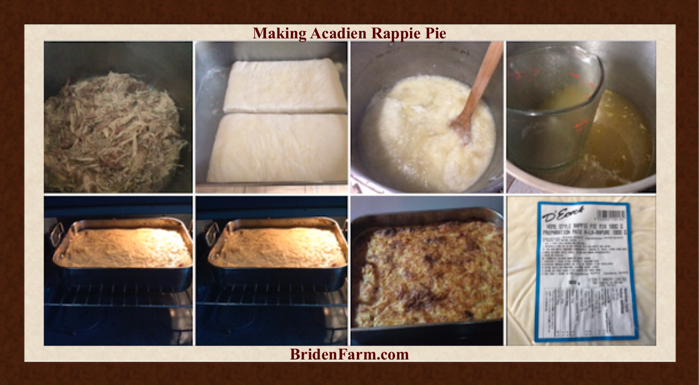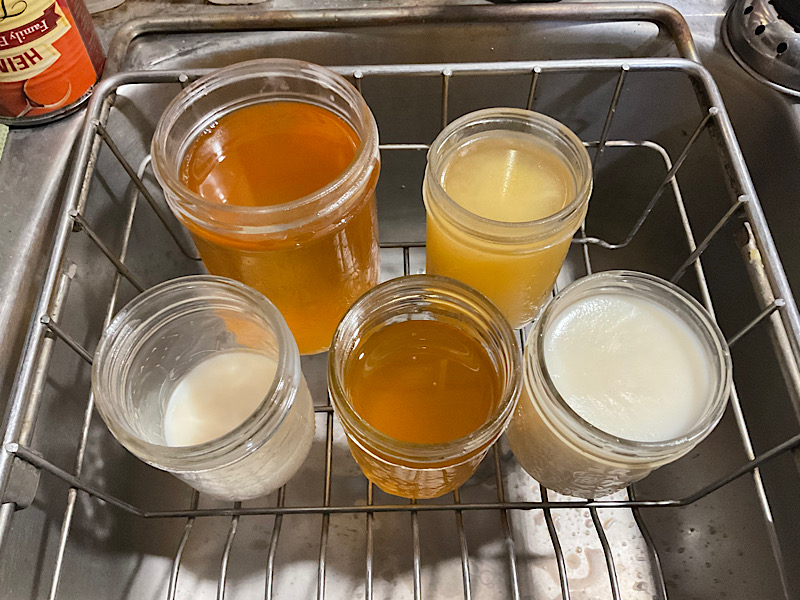It’s Rappie Pie Season and We Have Your Rabbits

The Yarmouth & Acadian Shores has a Recipe for Your Next Rappie Pie, or râpure in French!
Now, You may just be wondering, “What the heck is Rapie Pie!?”
Well, the Yarmouth & Acadian Shores website describes it as, “a well-loved traditional Acadian dish. It’s unique to the region, made from a delicious mix of potatoes and chicken.”
Of course, if You’re from here, You probably know that the best râpure (Rappie Pie) is made with Rabbits!
Of course, there are those who prefer Rappie Pie made with Beef, Chicken, or even Clams!
Yet, many of us prefer Rabbit Meat in our râpure!
If possible we prefer Wild Rabbit! However, it’s become all but impossible to obtain Wild Rabbits! See, the Wild Rabbit population has nearly disappeared! Thanks in no small part to the “Eastern Coyote”, or as some suspect it to be, The Grey Wolf. Considering most Coyotes weigh no more than 35 – 40 lbs, and the Eastern Coyote weighs as much as double that, it seems possible they are wolves! Some say that the Dept. of Natural Resources, then the Lands and Forests, quietly introduced them to Nova Scotia in the early to mid-1970s when the Grey Wolf populations in other areas were becoming all but extinct. Nevertheless, I digress!
Whatever the reason, the Wild Rabbit populations in Nova Scotia have drastically declined in most areas. Although they have started to reestablish themselves in some areas. In 2017 NovaScotiaHunting.com reported that
A decrease in hunters and the arrival of coyotes can likely account for the huge drop in the number of snowshoe hares harvested annually over the last 30 years in Nova Scotia. In 1983-84 the number was more than 500,000, but by last winter it had dropped to 65,000
An alarming decrease of 87% over a 30 Year Period.
Knowing, that we’ve, for whatever reason, lost most of our Wild Rabbit Population, I started working on a substitute! See, I’ve never been impressed by Domestic Rabbit Meat! Domestic Rabbit Meat is usually sickly pale, and lacking the taste of our Wild Rabbits. I should also mention that in Nova Scotia, our Wild Rabbits are actually Snowshoe Hare. Our Snow Shoe hair have a darker reddish-coloured meat and is much more flavourful than domestic rabbit. Over the past few years, I’ve managed to develop an end product that more closely resembles Wild Rabbit than Domestic Rabbit!
Skeptical? I would be too! So, buy it to try it!
If You don’t agree that our “Nearly Wild Rabbit” meat isn’t closer to Wild than Domesticated let me know!
How do we do it? We keep our Rabbits in mobile pens, moving them every day to new forage. They are outside for at least 8 months out of the year. Their diet is primarily natural forage similar to that of a wild rabbit. Keeping them in a natural habitat and on a similar diet gives them darker reddish meat with a more robust flavour like the Wild Rabbit. Making them ideal for Rappie Pie!
So, whether You’re making Rappie Pie, or You’re craving for the taste of wild rabbit, we invite you to get our “Nearly Wild Rabbits” and I think You’ll be glad You did! Contact me, Brian at Briden Farm, 902-907-0770.


